
Audie Murphy stood all of five foot five and was rejected by both the US Marines and the Airborne. Once he went to war, however, that guy was a force of nature. Murphy ultimately became the most highly decorated US soldier in American history.
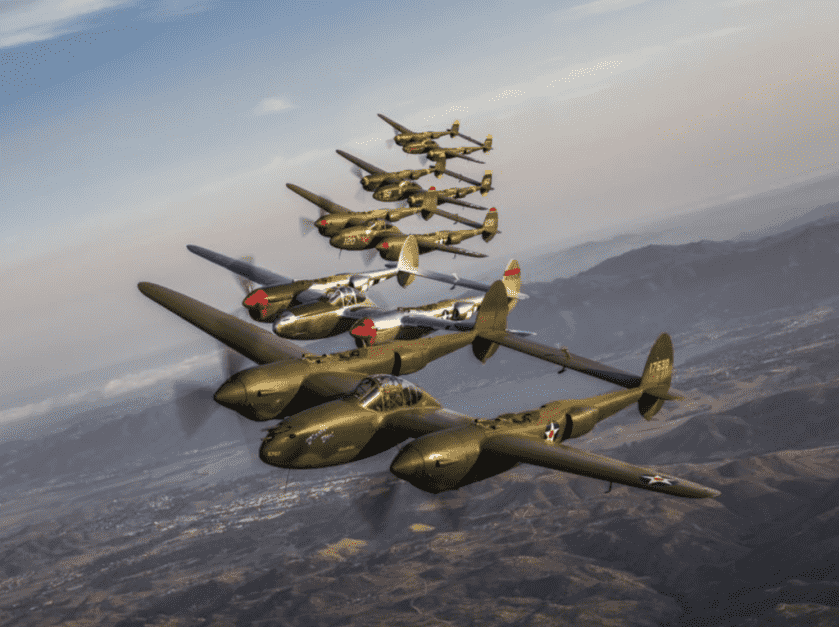
In many ways, Charles Carpenter was also a natural warrior. Carpenter enlisted in the Army in 1942 for flight training. The Army Air Corps then encompassed all land-based aviation assets. Where many of Carpenter’s counterparts flew such hot rods as the P38 Lightning, P47 Thunderbolt, or B17 Flying Fortress, Charles Carpenter got the L-4H.
The Plane

The L-4H was a very slightly militarized version of the civilian Piper J-3 Cub. The L-4H featured a 65-hp Continental A-65-8 air-cooled, horizontally-opposed four-cylinder engine and a top speed of 87 mph. The cruise was a mere 75 mph. With a maximum takeoff weight of 1,220 pounds that left the unarmed L-4H with a useful load of some 455 pounds. Even with a skinny pilot, there wasn’t a lot left over. The Army called the plane the Grasshopper.

The L-4H was a pretty sad excuse for a combat airplane. The fuselage was light welded steel covered in fabric. There was just enough space for two crewmen seated in tandem. The fixed-pitch prop was made from wood.
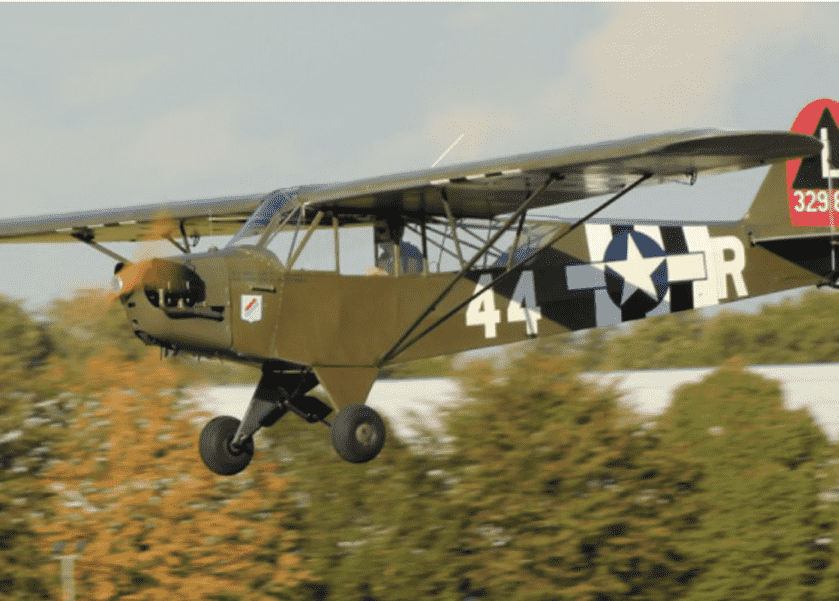
The L-4H was a reconnaissance aircraft pure and simple. Its mission was to zip ahead of American armored columns at low levels and report enemy troop dispositions. Grasshopper pilots also trained as artillery spotters. Early on German forces assiduously avoided engaging the Grasshoppers for fear of drawing undue attention from Allied artillery or close air support. Charles Carpenter was having none of that.
The Mad Major

By 1944, Carpenter had been promoted to Major and was assigned to the 1st Bombardment Division in France. He supported Patton’s Third Army in its frenetic dash across France. By the time the Allies got a foothold on the continent, Carpenter was ready to fight.

By stripping out the radios and as much ancillary equipment as possible, Carpenter could carry about 230 pounds’ worth of ordnance. An M1A1 Bazooka weighs 13.26 pounds unloaded. Carpenter found that he could strap three of these simple rocket launchers underneath each wing of his Grasshopper and still get airborne. The Nazis were soon to discover that Charles Carpenter’s little insect of a plane packed a fearsome sting.
The Weapon

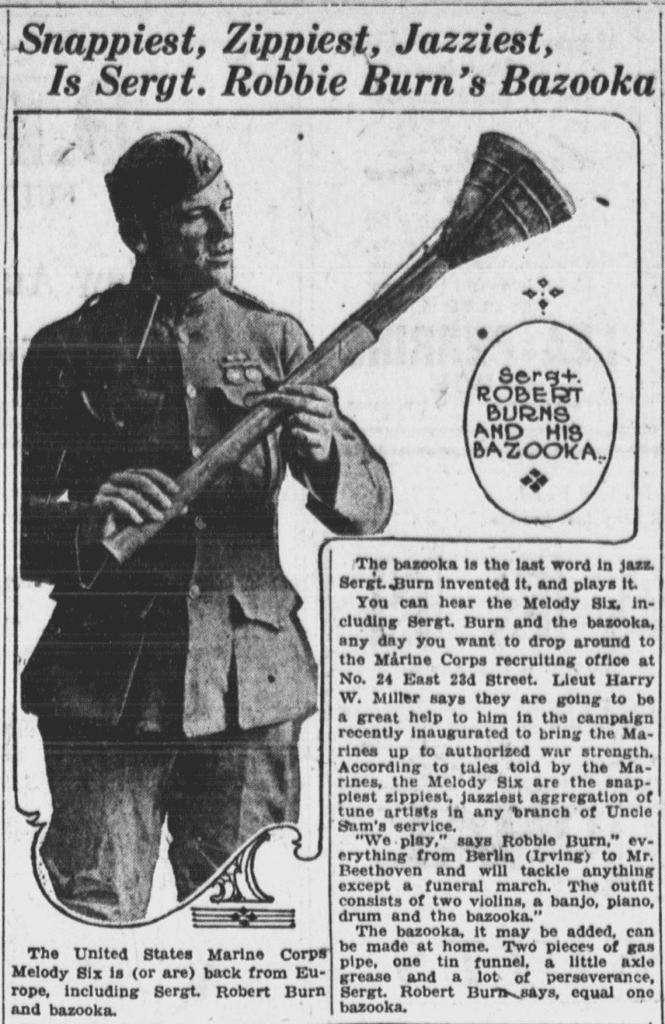
The Bazooka was a recoilless antitank rocket launcher that revolutionized Infantry anti-armor capabilities. The name Bazooka was drawn from a musical instrument popularized by the comedian Bob Burns in the 1930s. The weapon was the original brainchild of the world’s first true rocket scientist, Robert Goddard.

Working under government contract during the First World War, Goddard and his coworker Dr. Clarence Hickman were tasked with weaponizing early rocket technology. They successfully demonstrated their rocket to the US Army Signal Corps at Aberdeen Proving Ground on November 6, 1918, five days before the armistice. Goddard developed tuberculosis and was forced to withdraw from the project that ultimately led to the Bazooka. His comrade Dr. Hickman subsequently completed the undertaking in the early 1940s.

Shaped charge technology dates back to the 18th century. An Austrian mining engineer named Franz Xaver von Baader first discovered the phenomenon wherein blasting powder might be packed into a cone and used to focus the energy of the blast onto a single point. An American chemist named Charles Munroe further explored the practical applications of this effect in the 1880s.

A shaped charge is a form of explosive lens wherein the kinetic energy from a high explosive charge is focused onto a single point. This allows a relatively lightweight warhead to punch through a substantial thickness of armor plate. The armor-piercing capability of a shaped charge is generally about seven times its diameter.

By the late 1930s, American ordnance engineers had developed the M10 antitank grenade. This 3.5-pound monster would punch through 60mm of steel armor but was really too heavy to be thrown. Rifle grenade versions were developed for the Infantry rifles of the day, but they were still relatively inaccurate.

In 1942 Colonel Leslie Skinner tasked LT Edward Uhl with developing an effective delivery system that could get the M10 shaped charge grenade onto the side of a Nazi tank without killing the firer. Uhl created a modest rocket to drive the round easily enough but was struggling to find a way to safely launch the thing. He later said, “I was walking by this scrap pile, and there was a tube that happened to be the same size as the grenade that we were turning into a rocket. I said, ‘That’s the answer!’ Put the tube on a soldier’s shoulder with the rocket inside, and away it goes.” The end result was the M1 Bazooka.
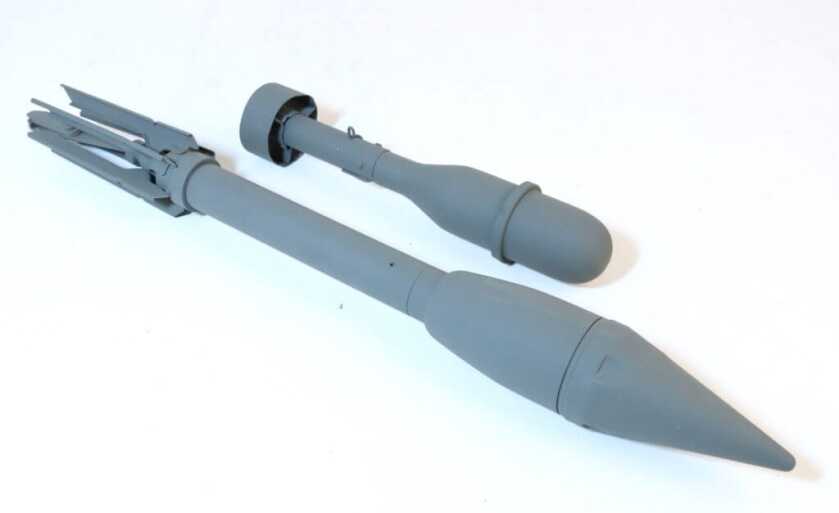
M1 and improved M1A1 Bazookas were powered by batteries held inside their wooden shoulder rests. The M6 rockets they fired were notoriously unreliable. The later M6A1 versions were markedly more effective. Subsequent M9 and M9A1 Bazookas were powered by a magneto system contained within the firing module and did not require separate batteries.
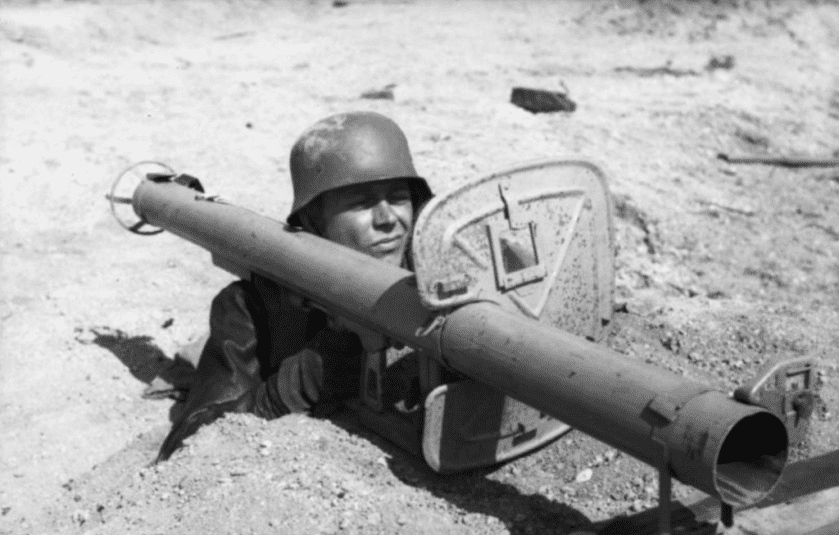
The Germans captured several bazookas intact during the fighting in North Africa and reverse engineered the weapon to form the Panzerschreck (literally “Tank’s Bane” or “Tank Fright”). This rocket launcher featured a larger, more capable 8.8cm warhead and a built-in blast shield. The Japanese developed a similar weapon called the Type 4 AT Rocket Launcher that fired a 70mm projectile.
Rosie the Rocketer
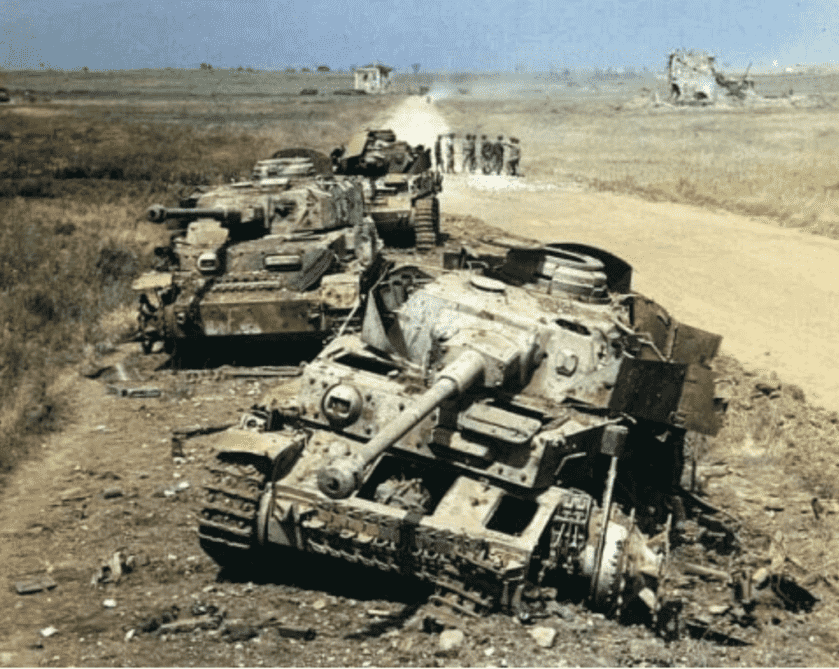
Major Carpenter christened his spindly mount “Rosie the Rocketer” after “Rosie the Riveter” and adorned the side of the fuselage accordingly. In the first months after the Normandy invasion, Carpenter disabled four tanks and a German armored car. Such audacity gained Major Carpenter a fair amount of notoriety. During one interview he stated that his idea of fighting a war was to, “Attack, attack, and attack again.” The media came to refer to Carpenter as “The Mad Major” or “Bazooka Charlie.”

Carpenter was once on the ground at the front scouting landing areas for his Grasshopper when he was attacked by German Infantry. Carpenter leapt atop a nearby Sherman and engaged the Germans with the M2 .50-caliber machinegun. During the course of the chaotic battle that followed Carpenter’s tank inadvertently engaged a friendly Sherman. Though apparently no one was hurt, the Sherman, a bulldozer variant, was disabled.

Major Carpenter somehow bore responsibility for this sordid event and was threatened with court-martial. General Patton got wind of it and dismissed the charges out of hand, awarding Major Carpenter the Silver Star instead. Patton was quoted as having said that Carpenter was the type of fighter he wanted in his Army.

Major Carpenter was ultimately credited with immobilizing a total of fourteen German tanks along with a variety of lesser armored vehicles. Of these, six tanks were completely destroyed, having been penetrated from above through their relatively thin roof armor. Two of the tanks he destroyed were PzKpfw Mk VI Tiger I’s. Two of those immobilized were Mark V Panthers.
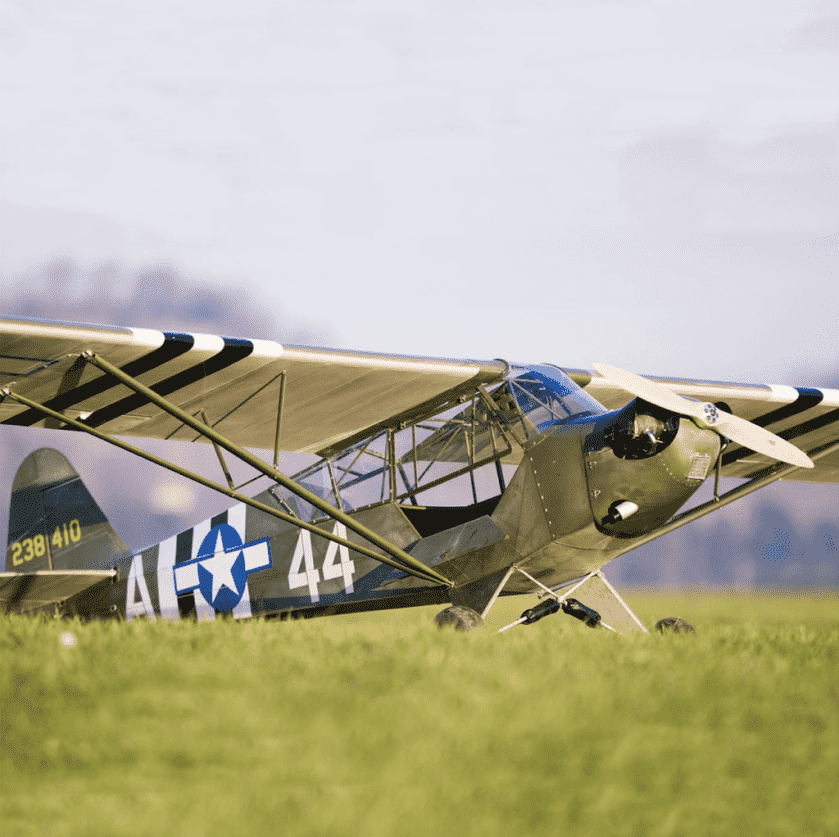
In an August 1944 letter home Carpenter wrote, “Lately I have been taking quite a few chances but my luck has been marvelous. Yesterday I got a bullet hole through the wing and hit a church steeple with one wheel.”
The Rest of the Story

In 1945 Major Carpenter was diagnosed with Hodgkin’s Disease and told that he had less than two years to live. He was promoted, medically discharged, and returned to Urbana, Illinois, where he worked as a high school history teacher. Once again defying the odds he lived on until 1966, dying at the age of 53.
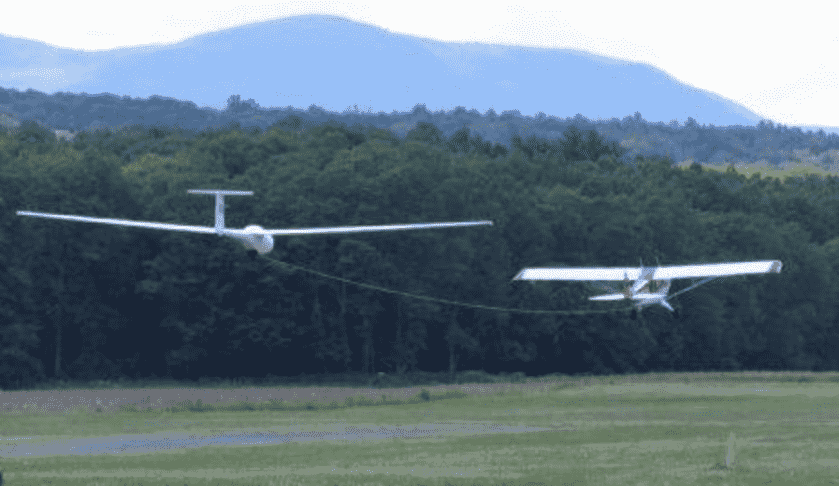
Carpenter’s L-4H was abandoned in Europe after the war. The plane changed hands a couple of times and was ultimately the second post-war civil aircraft registered in Austria. Refitted with a more powerful engine and German instruments this old military airplane was painted yellow and used as a tow plane for sport gliders. The machine eventually ended up as a static display at the Osterreichisches Luftfahrtmuseum at Graz Airport in Austria.
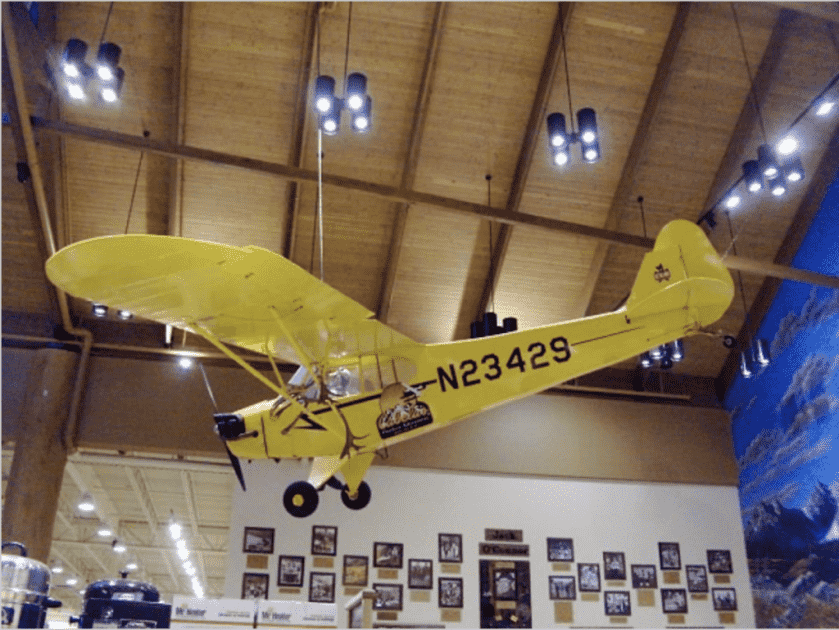
In 2017 an aviation enthusiast named Joe Schiel was searching military aircraft serial numbers on the Internet. He serendipitously discovered that the little yellow cub at the Graz Airport was actually the very airplane “Bazooka Charlie” Carpenter had used to destroy all that German armor back during WW2. He contacted Rob Collings, one of the foremost warbird collectors in the US. Collings worked a deal, and the plane was shipped to Oregon for restoration.

Colin Powers, the restoration manager for the Evergreen Aviation and Space Museum did the work. He was surprised by what he found once he got the little plane’s skin off.

“One bullet had passed from the bottom through the leading edge of the aileron into the wing, went through the steel-plate hinge for the aileron, tore a big chunk of metal out of one of the ribs, and exited out through the top of the wing…I’ll just put a patch where it exited.”

Powers found a double patch on the front strut from combat damage as well. Once the restoration was complete Charles Carpenter’s granddaughter, herself a graphic designer, painstakingly reproduced the “Rosie the Rocketer” nose art. Now in flyable condition, “Rosie the Rocketer” can be seen at the Collings Foundation Museum in Massachusetts today.



The hits keep coming sir.
What a awesome story about one of our lions. This should be made into a movie. Such a story!
I have a practice rocket in my collection of the same caliber as the bazookas on that aircraft
That was an informative and interesting article. I’m currently listening to another WWII air story called “A Higher Call” and I believe that Charlie was mentioned several times as an aggressive fighter. The pictures really help a history buff like myself to understand just what a formible job he undertook. Just getting that plane off the ground with those bazooka on his wings must have aged him every time he took off. Please add more stories like this…they help to have your readers appreciate the advances that have been made in firearms of all types. Michele Del Gaizo -Carver MA
I really enjoyed this story my Grandfather Richard Leroy Clippinger was in WWI and was part of the “Aviation Section of Signal Corpse”. I know this was a different war but this story helped me know a little bit of history that my Grandfather was a part of some 30 years before. Thank you for a wonderful story.
Dang, that was the coolest story I’ve read in a long time! Thanks for publishing. I’m sharing with my friends!
I can’t seem to find any nose art in the pictures? Never mind it only on the right side, my mistake
Coolest thing I’ve read in some time.
Thank you for taking the time to post it and not having all the tangental distractions that so many reads on here have these days.
Todd.
Accounts like these are important because without them these brave men served for nothing. How many more behind the scene Americans need to have their story told?
Nobody today has a clue what our freedoms cost.
What a wonderful story, thank you so much!
I own a Piper PA-18 ’ Supercub’ which is a bigger engine & stronger airframed version of the J-3. It is too bad we don’t have any footage of Charlie diving on tanks! He must have been coming down almost vertical to penetrate the roof armor on a tank… that is some pretty good flying…